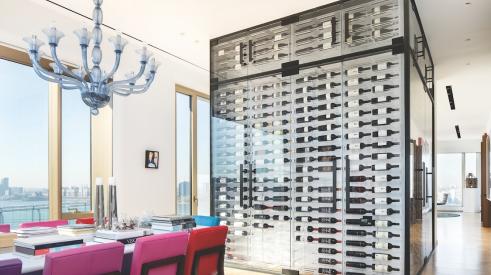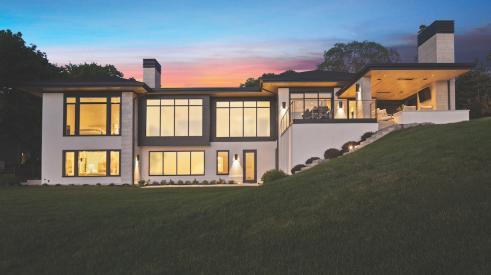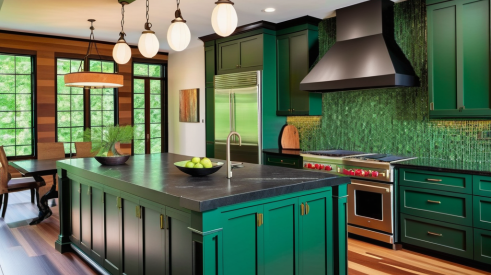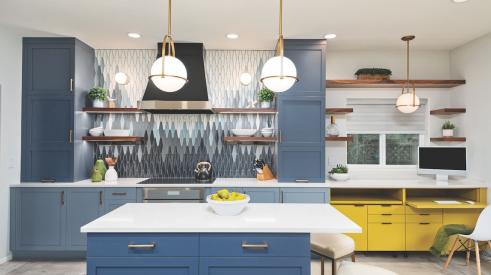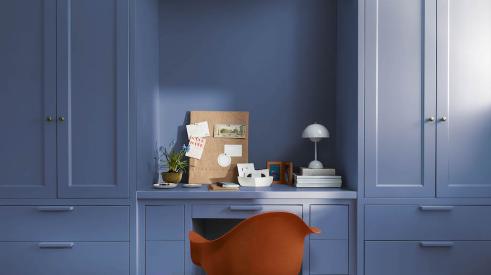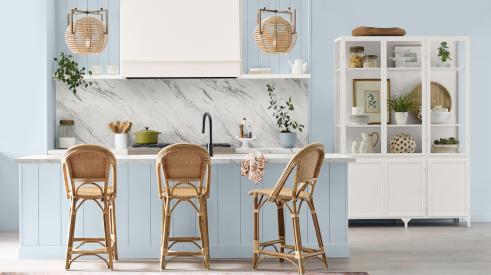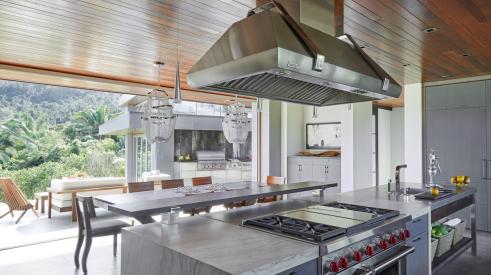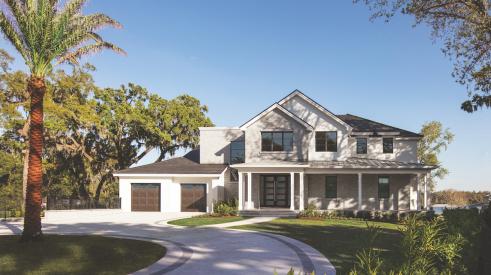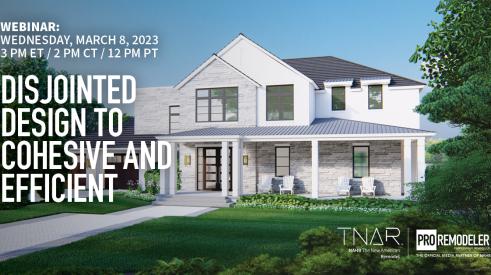Gas fireplaces mean hot sales in today's remodeling marketplace. "Consumers place the desire for a fireplace very high," says Robert Dischner, director of marketing for Hearth Products. "It's one of the top three rated amenities in the United States, even in warm climates." According to Dischner, the money spent to add a fireplace to a home remodeling project is almost immediately recoverable in that home's sale price. With technology improving to allow for more realistic-looking flames and better heating capabilities, demand for gas products doesn't look like it will slow down anytime soon, either.
"In general, the fireplace market right now is about 50 percent wood burning and gas burning," Dischner says. "If you rewound yourself 10 years, it would have been 90 percent woodburning, and this trend [toward gas fireplaces] is going to continue." Gas fireplaces are more convenient for busy, two-income baby-boomers who don't want to deal with the time and hassle of buying and storing cords of wood, not to mention the work required to light and clean up after the fire itself. Remodeling jobs for these homeowners will require a gas system with a realistic-looking fire.
Easy-to-install gas fireplaces can be purchased as pre-assembled inserts and log sets ready to place into an existing chimney system. John Hart, president and CEO of Empire Comfort Systems, says matching a log style to a home can be as important as matching the mantel style to a room. "There's a regional difference," he says. "You want to match the logs with what type of wood they're used to burning in that area."
Within the gas fireplace market, direct-vent and vent-free fireplaces clearly dominate. Both types of gas hearth products are inexpensive and easy to install, increasing the appeal to remodelers and their clients. According to Dave Cribb, president of Heatilator, a remodeler can install a mid-range direct-vent fireplace into a wood cabinet for about $1,900, in about half a day.
For remodelers, job opportunities exist in adding gas log sets or gas inserts into existing fireplace chimney systems. "The remodel market is the single biggest opportunity for direct-vent gas fireplaces there is, and it's the most under-penetrated," says Cribb. "Only about 20 percent of Americans realize that they can put a direct-vent fireplace in without putting a chimney through little Bobby's bedroom." Direct-vent and vent-free products are also the most ideal for providing additional heat to a home. "We're seeing a trend toward larger fireplaces," says Kurt Rumens, president of Travis Industries. "People want a large fire with large flames and a lot of heat."
Because there isn't a chimney system to release the fireplace's heat, direct-vent and vent-free fireplaces can come "heater rated," providing ample amounts of heat to a home--or a remodeling addition. "You can heat a fairly large addition with a furnace-rated fireplace, and save the cost of ducting, rather than heat with a furnace," says Cribb.
According to Hart, direct-vent and vent-free products have different strengths and weaknesses. "Vent-free gives off a lot of heat, [but a direct-vent] log looks better," he says. "If all your client wants is appearance, vented is the way they're going to go. On the other hand, if they're concerned about energy costs, the vented log is more expensive. It has twice the gas and not as much heat."
Vent-free fireplaces aren't for everyone, either. Because vent-free products use natural elements in the air of a room for combustion, regulations for installation are strict. Most vent-free systems are 99.9 percent efficient in their combustion, and all come with an oxygen depletion sensor that will shut off the fireplace automatically if the oxygen level of the room begins to dip too low. Vent-free fireplaces still cannot be used in homes in Massachusetts, Montana and California.
Popular accessories for gas systems include wall controls, remote controls and even traditional woodburning tool sets to keep up the illusion of a real wood fire. Most manufacturers also have kits available to add different styles of trim, doors and screens to fireplace inserts.
Also See:
Branching Out
State of The Market
Top Fireplace Locations
Direct- and free-vent fireplaces attract customers for their heating capabilities as well as beauty and ease of installation
Add new comment
Related Stories
Designing, Building, and Installing a Luxury Custom Wine Cube
An 11-foot wine cube enveloping a pantry is the stand out feature of this customized New York penthouse
Marvin Releases Switchable Privacy Glass Window
The privacy glass windows can be purchased from Marvin's Direct Glaze windows
Building A Small Projects Division from the Ground Up
Through hard work and careful strategy, Harth Home Services has seen big growth
Client Design Choices in the Time of Social Media and AI
Social media speeds up the trend cycles, and now artificially created images are falling into homeowners' hands
Design Trends to Watch in 2024
What’s in and out for the upcoming year? Remodeling designers share insights
Insights for Designing Outdoor Kitchens
Was the pandemic-fueled thirst for outdoor kitchen remodels and additions a fluke, or is it here to stay? Plus: The top design considerations for outdoor kitchens
Home Run Remodeling Lessons: The New American Remodel 2023
A final look at The New American Remodel 2023
Webinar: From Disjointed Design to Cohesive and Efficient—The New American Remodel 2023
Access the recording for the first The New American Remodel webinar held on March 8 at 2 pm CT



